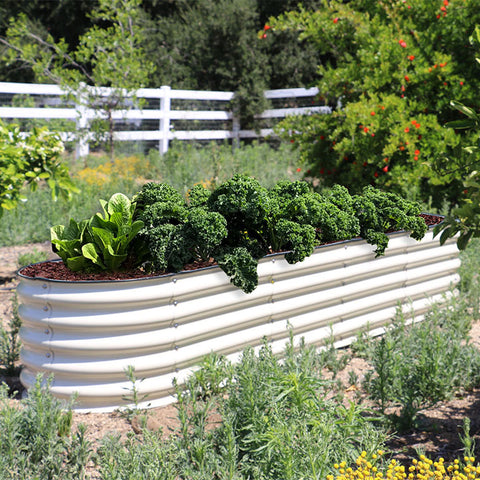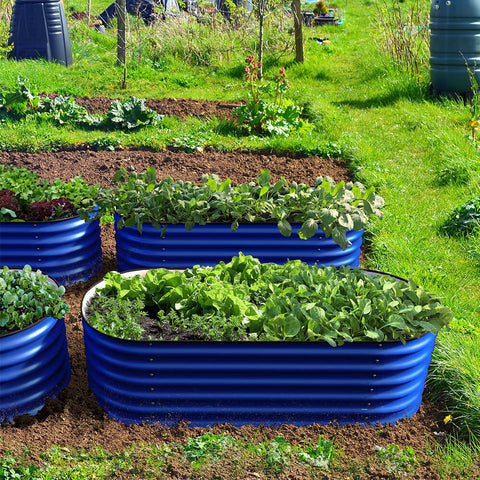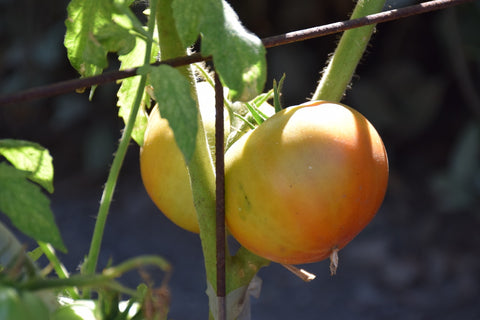Planting And Harvesting Tips For Raised Garden Beds
Growing crops at home may seem daunting, but here's the thing: gardening is a very rewarding hobby. This will help to save a lot of fresh agricultural products. This is an environmental protection activity. At harvest time, you will be surprised at the vitality and freshness of fruits and vegetables produced by your raised garden bed.
Basic factors to consider when building a raised garden bed
Correct position
Before planting crops, the first thing you should consider is where to plant them. Different areas of the outdoor space receive different amounts of sunlight. If you choose the wrong place, the plants will not get enough sunlight. Some vegetables, mainly green leafy vegetables, need at least 6 hours of sunlight every day, so this location is crucial to the life and health of crops. Check which vegetables grow best in sunny conditions, which vegetables can tolerate some shade, and which vegetables are best grown in a cool place.
Drainage
The advantage of using raised garden beds is to create the perfect soil formula to grow different crops. You have complete control over the soil quality because the garden is contained in a small space. Crops need well drained soil and hate standing water. The moist soil will cause the root to be moist, which will pave the way for the root to rot. Vegetables grown in moist soil tend to be weak. Always cultivate the soil and remove unwanted debris, as these debris will only hinder root growth. You can also install irrigation or drainage systems to prevent excess water from damaging crops.
Weather condition
Vegetables grow best in a stable climate, and there is no strong wind that can knock down soft stem plants. Strong winds may also hinder the work of pollinators. If you plant vegetables underground, please put the plants in a place where the flow of people is not large or the flood is not fast. If you use a raised garden bed, the plants will be adequately protected from pedestrian traffic and flooding from the raised garden bed.
Soil quality
Of course, part of the reason why a raised garden bed is an excellent place to grow different crops is that you can completely control the soil quality. If you really want to get a better yield in the harvest season, ordinary garden soil will not cut it.
To ensure a successful harvest, season after season, always start with nutrient rich soil. Thin and nutrient deficient soil will lead to fragile, thin and unhealthy plants. Because you are planting on raised garden beds, you have the opportunity to use high-quality soil mixtures as a foundation. Add a lot of organic substances in the mixture, such as worm castings, kelp powder and oyster shell powder, to provide essential vitamins and minerals for your crops. Always prepare the soil before and after the growing season to ensure that the soil quality is sufficient to support plant growth.
Best crop to grow on raised garden beds
It's important to grow what you like to eat. Make room for several crops that are new to you or crop varieties for each season. Some of the best crops to grow on a raised garden bed are:
- Tomatoes
- Peppers
- Pumpkin and melon
- Cucumber
- Beans and peas
- Onions
- Eggplant
- Beets
- Carrots
- Potatoes
- Sweet potato
- Small and medium-sized herbs
Deep rooted crops such as potatoes and sweet potatoes are best grown in deeper garden beds. Small and medium-sized herbs are very suitable for growing on the raised garden bed, as long as the raised garden bed is set in a sunny place.
Food is divided into cold season and warm season crops. Lettuce, broccoli and peas are planted in early spring and autumn, while tomatoes, peppers and cucumbers are best planted from late spring to summer.
Plant tall crops such as corn or stem beans on the north side of the garden to avoid blocking sunlight and crops with low shade.
Some crops mature faster than others, such as radish and bush beans, while tomatoes take longer to mature. If you grow from seeds, check the packaging to know the maturity of the plant.
Planting techniques to increase yield
Planting crops in a triangle
Most growers prefer to plant crops in rows, because this is the simplest and most common crop planting mode. However, if you are striving for the maximum yield per bed, please plant the vegetables in a triangle. Planting crops in a triangle pattern instead of the usual row or square pattern allows you to grow 10% to 14% more plants per bed.
Growth space
In order to maximize the yield, it is necessary to check whether there is enough space for plants to grow. If the plants are too crowded, they will not reach their full size, so they will not produce so many fruits. In addition, the compact spacing gives pests a better chance to destroy your crops, because they are more accessible+plants become weaker and prone to disease.
Always remember that the weight of plants per square foot is more important than the number of plants per square foot. A good example is Roman lettuce, where researchers planted 10 inches of space between the two, instead of 8 inches. The study found that when given more space for growth, their yield per plant was twice as high.
Plant climbing plants
If you want to maximize the space in a raised garden bed garden, consider planting climbing plants. Climbing plants, such as tomatoes, polar beans, peas, pumpkins, melons, etc., grow directly upward, which will bring higher yield because they do not occupy so much space. Vertically planted plants will also save you time because they grow faster, are easier to maintain, and are less susceptible to fungal disease due to better air circulation. Of course, this means that you must install scaffolding, fences, stakes, cages or other structures to support the grape plants.
Try planting with your partner
Some plants grow well together. A good example is the "three sisters" interbreeding method used by Native Americans. Corn, beans and pumpkins are planted close together. The tall and strong stalks of corn support the stalk beans, while the pumpkins are spread on the ground, killing weeds in the process. Other crops, such as tomatoes, basil, onions, carrots and radishes, as well as beets and celery, and lettuce and beans, help each other thrive when planted close to each other.
Strategic planting
Throughout the growing season, planting multiple crops in a given space allows you to make full use of each successive planting. But to do this, you need to arrange planting time correctly. A good strategy is to follow early lettuce and fast maturing corn. Then, plant more vegetables or overwintering garlic in a growing season. In the harvest season, your storage room will be full of fresh agricultural products!
Cover the bed
If you live in a place where the growing season is short, the heat loving plants will mature slowly. The great thing about a raised garden bed is that it keeps the soil warm. Hot vegetables are best planted on raised garden beds to get a good start. Of course, it is important to choose vegetables that have time to mature during the growing season in your region.
Covering a raised garden bed with textile or plastic will help extend the growing season and allow the crop to start early. This technology also allows you to harvest more end of season crops, such as tomatoes. The lid traps warm air around plants and soil, allowing you to squeeze out extra weeks of production!
Use crops to grow flowers
Different flowering plants grow well with some vegetables. Helianthemum, trollius and cosmos are excellent companion plants for tomatoes, pumpkins and cucumbers because their flowers attract pollinators. In addition to attracting pollinators, the splash of color will make your raised garden bed garden look better in spring and summer!
It is fun to plant and harvest different crops on the raised garden bed, because the whole process is simple and fast. Raised garden beds make fruit and fresh produce easier to obtain, so harvesting is not hard at all.
Nothing feels better than harvesting different crops that you grow naturally. Growing your own food is not only environmentally friendly, but also a great way to get organic fruits, vegetables and herbs.
Keep in mind that there are many strategies to try when planting and harvesting crops, but gardening with raised garden beds will definitely lead to better yields. The raised garden bed allows you to start the growing season early and produce crops later in the season.



